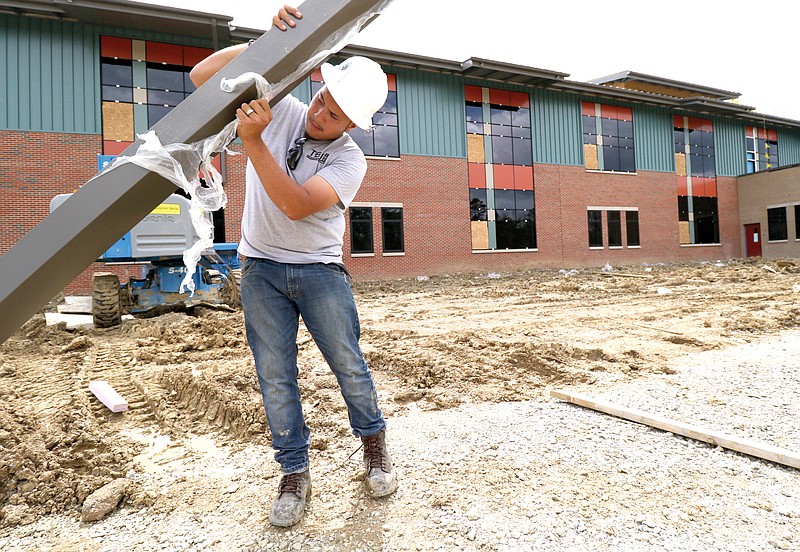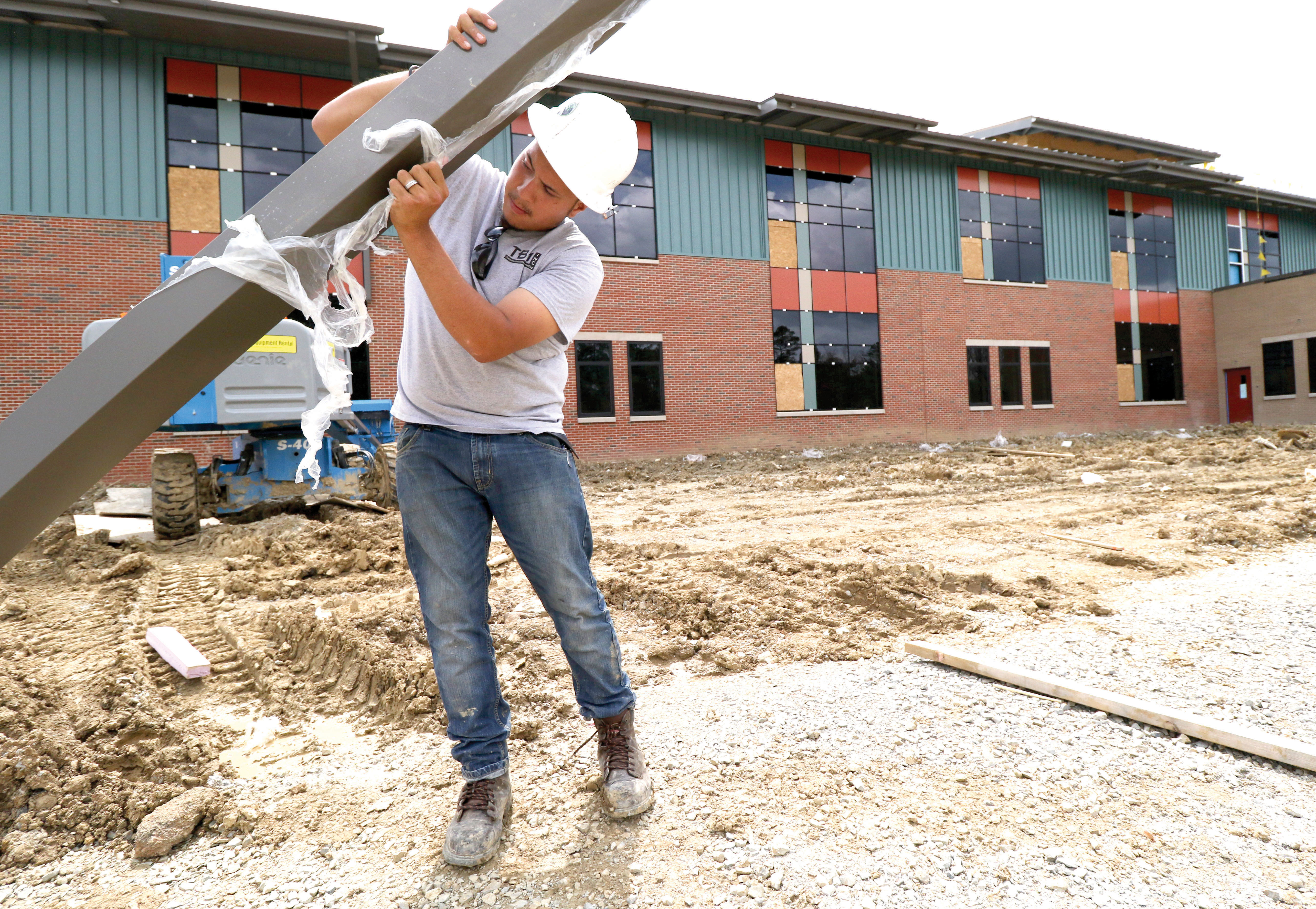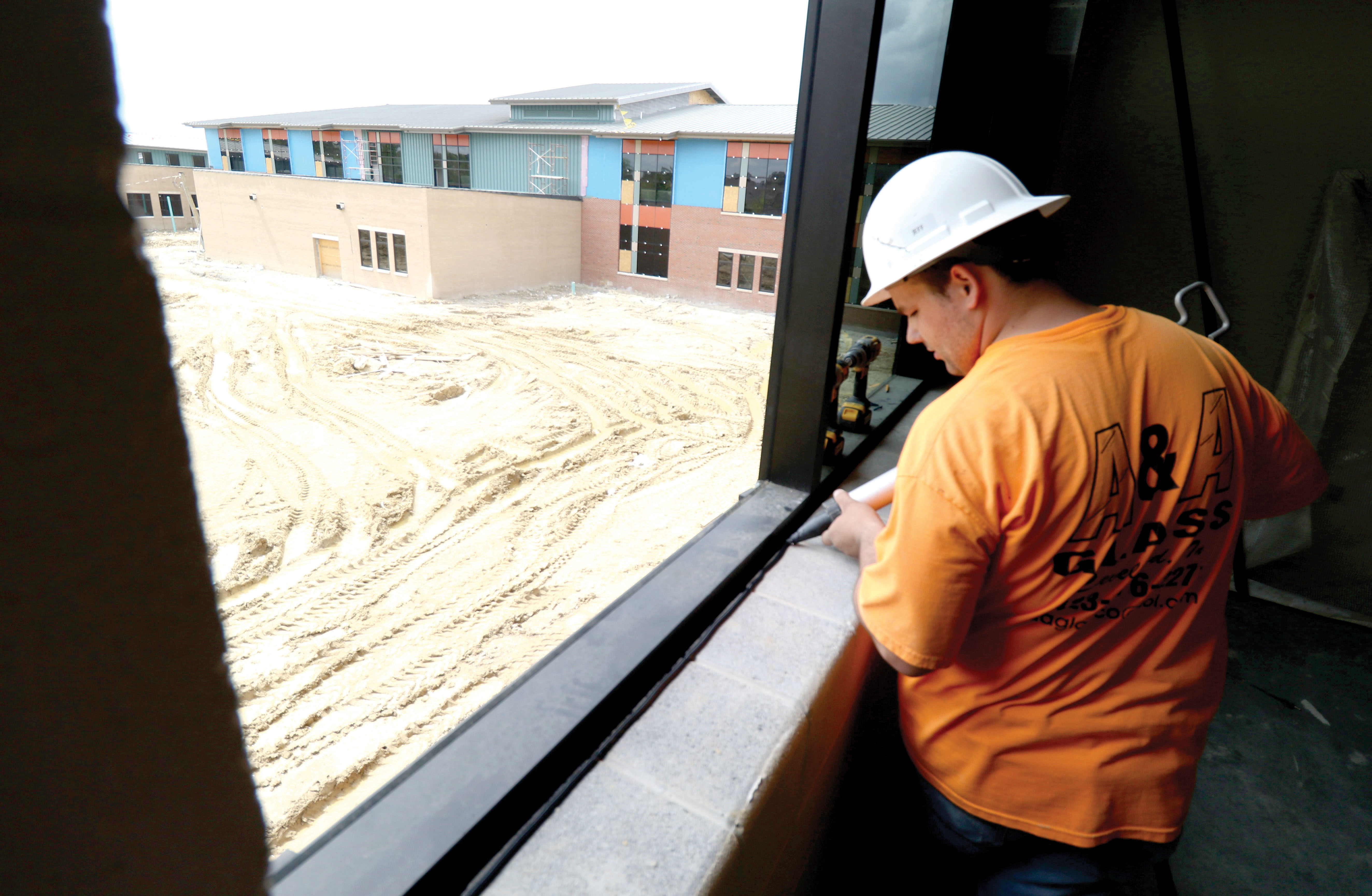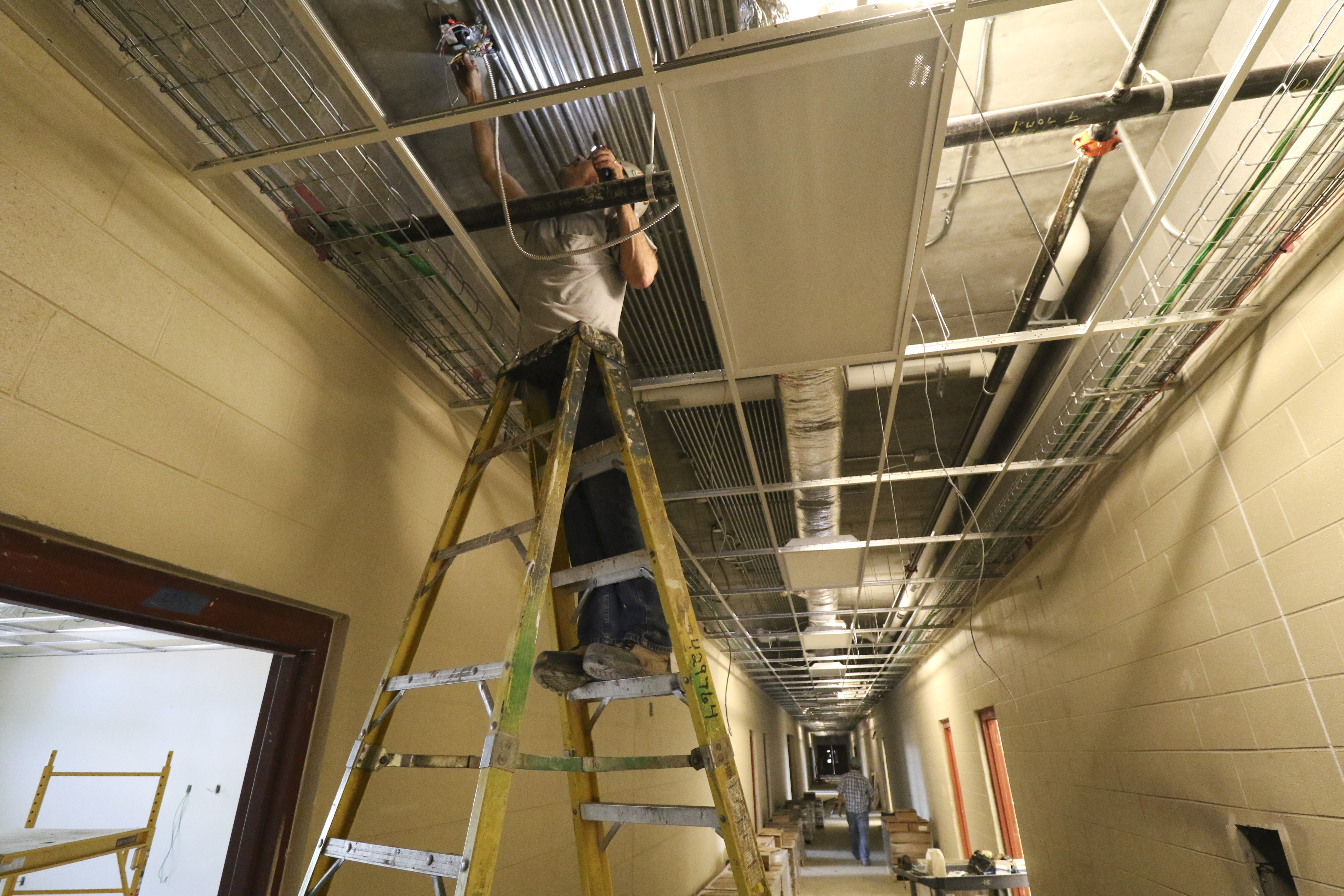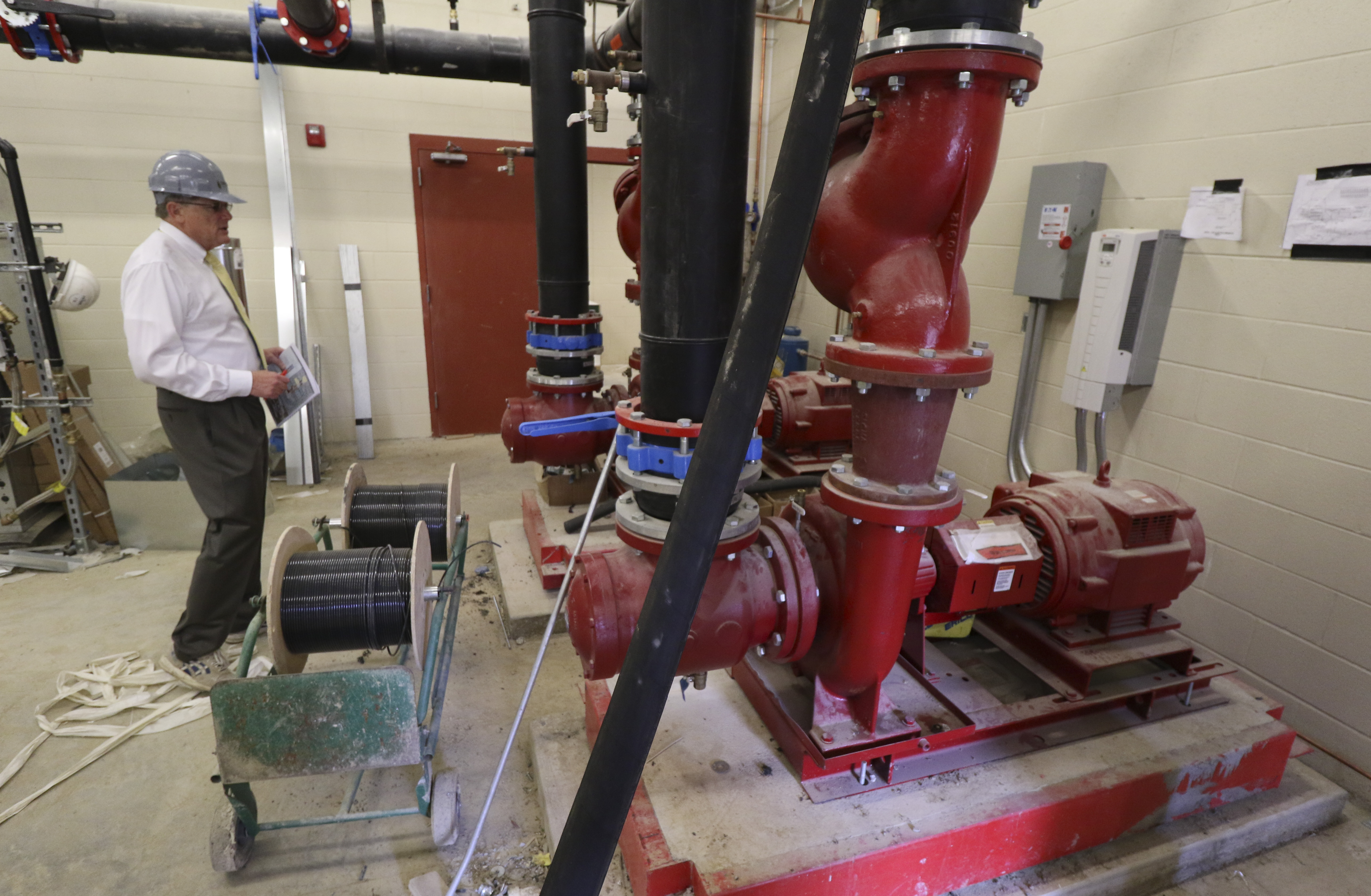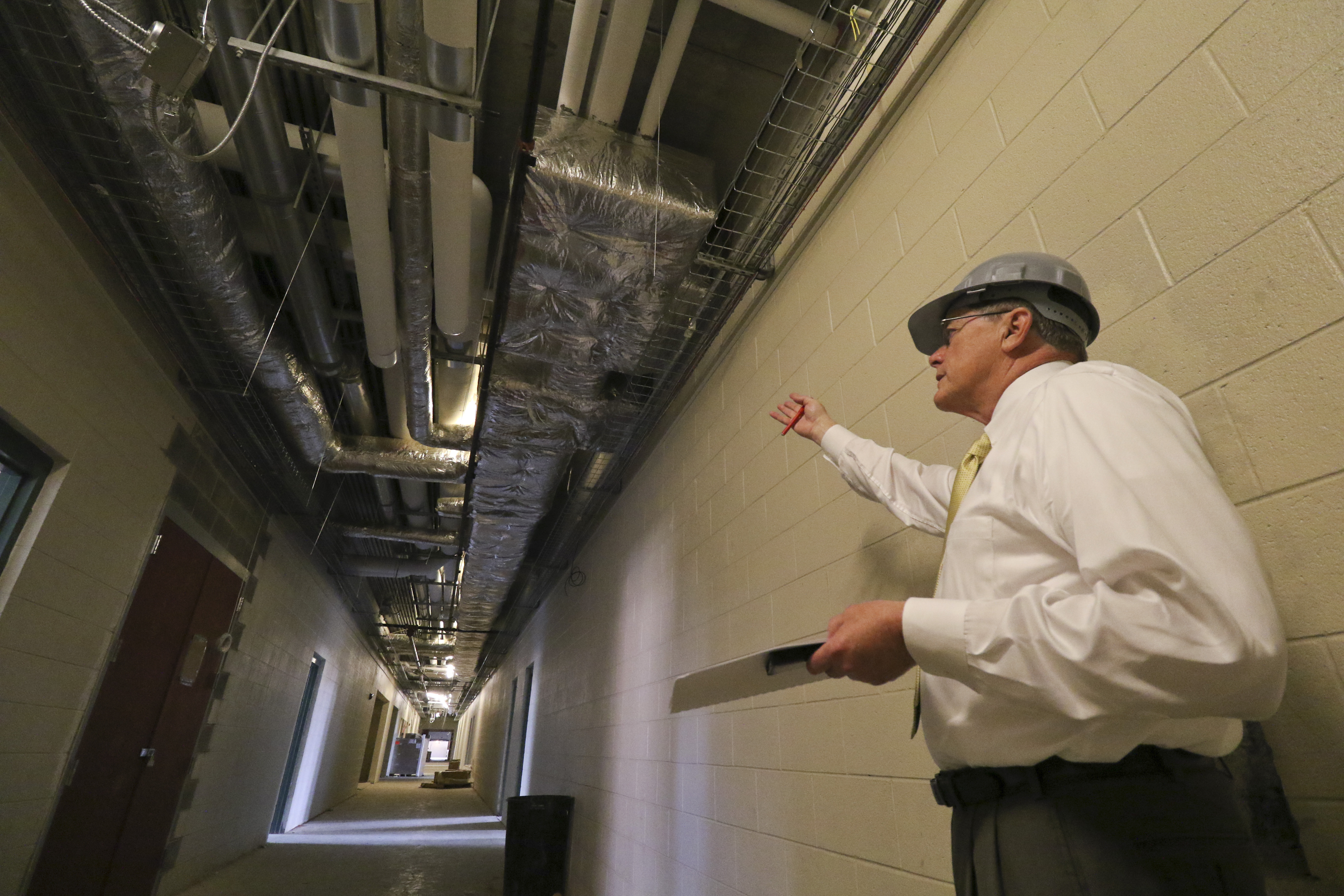Hamilton County is on a roll when it comes to building huge elementary schools.
The trend began in August 2013 with the opening of the 1,100-student Ooltewah Elementary School, which was bigger than every school in the district except for the four largest high schools.
Next up is the new East Brainerd Elementary School near Hamilton Place mall, which will have room for 1,100 students when it opens in August.
Then, on April 30, officials will unseal construction bids for a new Ganns Middle Valley Elementary School between Hixson and Soddy-Daisy. That school is expected to hold close to 1,000 students when it opens -- possibly as early as 2016 if an "accelerated" construction schedule is met.
And long term, the Hamilton County Department of Education hopes to build an 1,100-student elementary school on Hixson Pike to replace the Alpine Crest, DuPont and Rivermont elementary schools.
Population growth drives school construction. But another reason cited for the boom in large elementary schools is the Basic Education Program, the state's funding formula for public education.
The state requires one teacher per every 20 children in kindergarten through third grade, said Assistant Superintendent Gary Waters, the school district's facilities manager. That's easier to "balance" in a large school, he said. If a small school has two full kindergarten classes of 20 students each, the district has to hire another teacher if another kindergartner enrolls.
"When the 41st child shows up, it kicks you into [hiring] another teacher," Waters said.
Repeat that pattern over many small schools, and the number of extra teachers required grows.
"We have about 530 more teachers in the school system than the BEP formula provides funding for," said Christie Jordan, the school district's accounting and budget director. That's mostly because of the elementary school teacher-to-student ratio requirements, she said.
"The formula funds us as if all of the children are in one school. But we have to staff each school on its own."
While the BEP is one factor nudging the school district toward large schools, it's not the only one, Waters added.
"That's not driving it. But it's one of the factors we consider," he said. "There's numerous advantages from an operational standpoint, and the efficiencies are just better."
Big schools, big savings
The advantage of big schools, Waters said, is that they're less expensive to staff, operate and maintain.
"You can run the school with one principal, instead of two," he said, comparing one big school to two smaller schools. "You don't need two kitchens and cafeterias."
Not every school official is sold on the idea of huge elementary schools in every situation.
School board member Kartisa Mosley, who represents Brainerd, sees advantages to community schools in disadvantaged neighborhoods, like those in her district, and in thriving neighborhoods, such as North Chattanooga, where home prices soar inside the zone for the award-winning Normal Park Museum Magnet School.
"[Neighborhood schools] do play an important role in that sense ... of community," Mosley said. When neighborhood schools are replaced with one, centralized large school, Mosley said, "transportation could be an issue. Parental involvement could be an issue."
Waters acknowledges that "a lot of parents and some teachers tend to prefer smaller schools."
But some change their minds, he said, when they see the advantages a large school has to offer. For example, large schools are more likely to have full-time physical education and music teachers in class every day, Waters said, as opposed to smaller schools where those classes are offered less frequently.
New East Brainerd 'economical'
The new East Brainerd Elementary School is being built inexpensively, said Vance Travis, president of TWH Architects Inc., the Chattanooga firm that designed the school. That's because officials from the school district and the county, which issues bonds to fund school construction, try to be "frugal in the right places," he said.
"Hamilton County is building schools more economically than just about anybody," Travis said.
East Brainerd Elementary School will have vinyl flooring and interior walls made of painted concrete block, he said. The school will cost about $127 per square foot to build, compared to the typical $150 to $200 per square foot elsewhere in Tennessee.
"You can't build houses this economically," Travis said.
Yet East Brainerd Elementary still will have special touches, he said, including a replica solar system that will hang from the ceiling of the soaring main entrance off Goodwin Road, with a large depiction of planet Earth on the flooring below.
The new school has a geothermal heating and cooling system that will cut its utility costs in half, Travis said. Geothermal is more expensive initially, he said, but the utility bill savings soon make up for that.
"The payoff's only five to seven years," Travis said. "After that, it's profit to the school system. It's gravy."
Another feature Travis is proud of is the school's layout, including the main hallway. It runs about a quarter mile from the main lobby at the north entrance on Goodwin Road to the gymnasium on the south side toward Igou Gap Road.
"You can't get lost in here, even though it's a large school," Travis said. "You can see all the way to the end. The sight lines [give a] sense of security."
In addition to building new elementary schools, the school district plans to add on to existing schools. Sale Creek Middle-High School, where all middle school students now are housed in portable buildings, will get an addition to hold 200 students. Wolftever Creek Elementary in Ooltewah will get an addition to hold 200 students. Nolan Elementary School in Signal Mountain will get an addition to hold about 150 students. Those school additions haven't yet been put out to bid, Waters said.
The Hamilton County Department of Education doesn't plan to ask the county for any additional school construction bond money when it proposes its budget in May to the County Commission, according to Waters.
The school district may ask the county for an additional $34 million in operating funds to pay for improvements such as art and foreign language in the elementary grades, which could be provided through a 40-cent property tax increase. The school board is expected to decide Thursday night whether to request the increased annual budget of $379 million, up from $345 million now.
Contact staff writer Tim Omarzu at tomarzu@timesfreepress.com ww.facebook.com/tim.omarzu or twitter.com/TimOmarzu or 423-757-6651.
